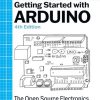Semiconductors 2nd Edition by David Ferry ISBN 9780750324809 0750324805
$50.00 Original price was: $50.00.$25.00Current price is: $25.00.
Semiconductors 2nd Edition by David Ferry – Ebook PDF Instant Download/Delivery: 9780750324809 ,0750324805
Full download Semiconductors 2nd Edition after payment
![]()
Product details:
ISBN 10: 0750324805
ISBN 13: 9780750324809
Author: David Ferry
This second edition discusses the importance of semiconductors along with their newest applications. The book introduces the field of semiconductors, before covering chapters on electronic structure, lattice dynamics, transport structures, optical properties and electron-electron interaction. The edition has been extensively updated with the addition of new chapters on statistics and optics, two expanded chapters on transport, and examples of the most recent applications of semiconductors. The book offers the deepest insight yet into the field of semiconductors, providing essential reading for graduate students and industry specialists.
Semiconductors 2nd Edition Table of contents:
1 Introduction
1.1 Multi-scale modeling in semiconductors
1.2 Building a planar MOSFET
1.3 Modern modifications
1.3.1 Random dopants
1.3.2 Roughness at the interface and mass changes
1.3.3 New oxides
1.3.4 New structures
1.3.5 Through the crystal ball
1.4 What is in this book?
References
2 Electronic structure
2.1 Periodic potentials
2.1.1 Bloch functions
2.1.2 Periodicity and gaps in energy
2.2 Potentials and pseudopotentials
2.3 Real-space methods
2.3.1 Bands in one dimension
2.3.2 Two-dimensional lattices
2.3.3 Three-dimensional lattices—tetrahedral coordination
2.3.4 First principles and empirical approaches
2.4 Momentum space methods
2.4.1 The local pseudo-potential approach
2.4.2 Adding nonlocal terms
2.4.3 The spin–orbit interaction
2.5 The k · p method
2.5.1 Valence and conduction band interactions
2.5.2 Examining the valence bands
2.5.3 Wave functions
2.6 The effective mass approximation
2.7 Dielectric scaling theory
2.7.1 Silicon and germanium
2.7.2 Group III–V compounds
2.7.3 Some group II–VI compounds
2.8 Semiconductor alloys
2.8.1 The virtual crystal approximation
2.8.2 Alloy ordering
2.9 Hetero-structures
2.9.1 Some theories on the band offset
2.9.2 The MOS heterostructure
2.9.3 The GaAs/AlGaAs heterostructure
2.9.4 Other materials
2.10 Surfaces
2.11 Some nanostructures
2.11.1 In0.53Ga0.47As nanowires
2.11.2 Graphene nano-ribbons
References
3 Lattice dynamics
3.1 Lattice waves and phonons
3.1.1 One-dimensional lattice
3.1.2 The diatomic lattice
3.1.3 Quantization of the one-dimensional lattice
3.2 Waves in deformable solids
3.2.1 (100) Waves
3.2.2 (110) Waves
3.3 Models for calculating phonon dynamics
3.3.1 Shell models
3.3.2 Valence force field models
3.3.3 Bond-charge models
3.3.4 First principles approaches
3.4 Lattice contributions to the dielectric function
3.5 Alloy complications
3.6 Anharmoic forces and the phonon lifetime
3.6.1 Anharmonic terms in the potential
3.6.2 Phonon lifetimes
References
4 Semiconductor statistics
4.1 Electron density and the Fermi level
4.1.1 The density of states
4.1.2 Intrinsic material
4.1.3 Extrinsic material [1, 2]
4.2 Deep levels
4.3 Disorder and localization
4.3.1 Localization of electronic states
4.3.2 Some examples
References
5 Carrier scattering
5.1 The electron–phonon interaction
5.2 Acoustic deformation potential scattering
5.2.1 Spherically symmetric bands
5.2.2 Ellipsoidal bands
5.3 Piezoelectric scattering
5.4 Optical and intervalley scattering
5.4.1 Zero-order scattering
5.4.2 First-order scattering
5.4.3 Inter-valley scattering
5.5 Polar optical phonon scattering
5.6 Other scattering mechanisms
5.6.1 Ionized impurity scattering
5.6.2 Coulomb scattering in two dimensions
5.6.3 Surface-roughness scattering
5.6.4 Alloy scattering
5.6.5 Defect scattering
References
6 Carrier transport
6.1 The Boltzmann transport equation
6.1.1 The relaxation time approximation
6.1.2 Conductivity
6.1.3 Diffusion
6.1.4 Magnetoconductivity
6.1.5 Transport in high magnetic field
6.1.6 Energy dependence of the relaxation time
6.2 Rode’s iterative approach
6.2.1 Transport in an electric field
6.2.2 Adding a magnetic field
6.3 The effect of spin on transport
6.3.1 Bulk inversion asymmetry
6.3.2 Structure inversion asymmetry
6.3.3 The spin Hall effect
References
7 High field transport
7.1 Physical observables
7.1.1 Equivalent valley transfer
7.1.2 Non-equivalent valley transfer
7.1.3 Transient velocity
7.1.4 Impact ionization
7.2 The ensemble Monte Carlo technique
7.2.1 The path integral
7.2.2 Free flight generation
7.2.3 Final state after scattering
7.2.4 Time synchronization of the ensemble
7.2.5 The rejection technique for nonlinear processes
7.2.6 Nonequilibrium phonons
References
8 Optical properties
8.1 Free-carrier absorption
8.1.1 Microwave absorption
8.1.2 Cyclotron resonance
8.1.3 Faraday rotation
8.2 Direct transitions
8.2.1 Allowed transitions
8.2.2 Forbidden transitions
8.3 Indirect transitions
8.3.1 Complex band structure
8.3.2 Absorption coefficient
8.4 Recombination
8.4.1 Radiative recombination
8.4.2 Trap recombination
References
9 The electron–electron interaction
9.1 The dielectric function
9.1.1 The Lindhard potential
9.1.2 The optical dielectric constant
9.1.3 The plasmon-pole approximation
9.1.4 Static screening
9.1.5 Momentum-dependent screening
9.1.6 High-frequency dynamic screening
9.2 Screening in low-dimensional materials
9.3 Free-particle interelectronic scattering
9.3.1 Electron scattering by energetic carriers
9.3.2 Energy gain and loss
9.4 Electron–plasmon scattering
9.4.1 Plasmon scattering in a three-dimensional system
9.4.2 Scattering in a quasi-two-dimensional system
9.4.3 Plasmon energy relaxation in graphene
9.4.4 Scattering in a quasi-one-dimensional system
9.5 Molecular dynamics
9.5.1 Homogeneous semiconductors
9.5.2 Incorporating Poisson’s equation
9.5.3 Splitting the Coulomb potential
9.5.4 Problems with ionized impurities
9.5.5 Accounting for finite size of the charges
References
People also search for Semiconductors 2nd Edition:
what are semiconductors used for
examples of semiconductors
doping in semiconductors
sion semiconductors
millennium semiconductors
Tags:
David Ferry,Semiconductors
You may also like…
Medicine - Cardiology
Business & Economics - Professional Finance
Multinational Business Finance, 15th 15th Edition David K. Eiteman
Technique - Electronics
Transport in Semiconductor Mesoscopic Devices 2nd Edition by David K. Ferry 9780750331395 0750331399
Technique - Electronics
Physics - Solid State Physics






